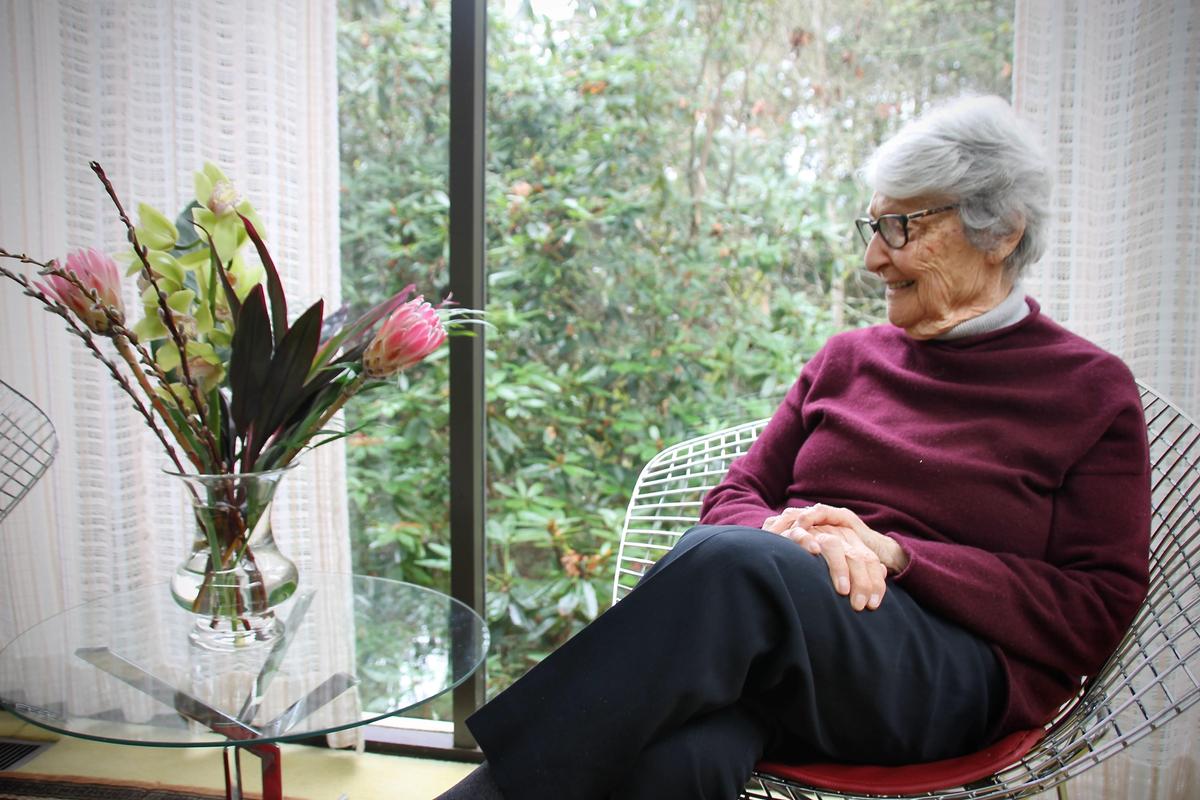The Canadian doyenne of landscape architecture, 99-year-old, Cornelia Hahn Oberlander, was remembered on Monday in a ceremony at the Temple Sholom in Vancouver, amid a grove of cedars in a garden sanctuary of her own design. Affectionately known as the “Queen of Green,” Oberlander died on 22 May, just a month short of her centenary birthday on 20 June. “My passion is to be with nature and introduce people to it from all levels of society,’ Oberlander said in an interview in 2018, from her post and beam home perched over a Vancouver ravine, ‘I believe in the therapeutic effects of greenery on the human soul.’
In an unanimous motion passed the day before her death by Vancouver city councillors, Oberlander will be posthumously awarded the Freedom of the City Award. This final laurel caps a career filled with accolades for the designer, including the Royal Architectural Institute of Canada’s Prix du XXe siècle in 2011, the American Society of Landscape Architects Medal in 2012, and a Companion of the Order of Canada. And the Cornelia Hahn Oberlander International Landscape Architect Prize, which like the Pritzker Prize in architecture is accompanied by a US$100,000 award, was created by the Cultural Landscape Foundation in her honour. The inaugural laureates will be announced this autumn. But Oberlander’s stellar trajectory, as a rabbi reminded mourners at her service on Wednesday, “almost didn’t happen”.
Narrowly escaping Germany in 1938 with her sister and their horticulturalist mother Beate Hahn—only two weeks after the Kristallnacht pogrom—Oberlander first settled in the US, where she graduated from Smith College in Northampton, Massachusetts in 1944 and went on to study as one of the first women students at the Harvard School of Design in Cambridge. Oberlander was both a pioneer of her profession and her gender, with a career that spanned the past century’s key design movements and connections to some of the world’s best-known architects. Taught by Walter Gropius at Harvard to look at landscape as something abstract rather than decorative, she worked on social housing projects with Louis Kahn, residential and public designs with Arthur Erickson, and sophisticated urban oases with Renzo Piano.
Many of the sustainable practices Oberlander espoused for years have now become mainstream. An early proponent of rewilding, community consultation, pedestrian-friendly accessibility and creative playgrounds for children, her projects span the globe from the Canadian embassy in Berlin, to The New York Times building in Manhattan.
But more than any other city, it was Vancouver that enjoyed the fruits of her landscape design. She moved there in 1953 with her husband and kindred creative spirit, the urban planner Peter Oberlander and became known for her collaborations with the Canadian architect Arthur Erickson on masterworks such as Robson Square. One of North America’s great public spaces, the project was conceived of as a high-rise turned on its side, spreading across three city blocks, and her trademark earthen berms and carefully selected palette of Japanese maples and pines, magnolia and rhododendron still offer elegant respite to city dwellers.
Her smaller projects were equally as important in defining the urban landscape, from the many “pocket parks” she designed across the city to social housing projects that included private terraces for the urban poor, to installations of cedar logs on beaches and a roof garden atop the Vancouver Public Library.
Oberlander, who remained an environmental activist until the end, fighting for more public green space and protesting developments that were insensitive to the urban landscape, saw her profession as a kind of healing art. Applying her concept of “invisible mending” by reintroducing native plantings to inner city locations and remote Arctic areas alike, exemplified the Jewish concept of tikkun olam, as her daughter Judy Oberlander reminded mourners at the service, or “repairing the world”.


